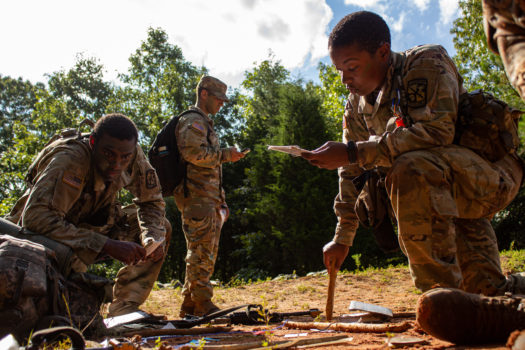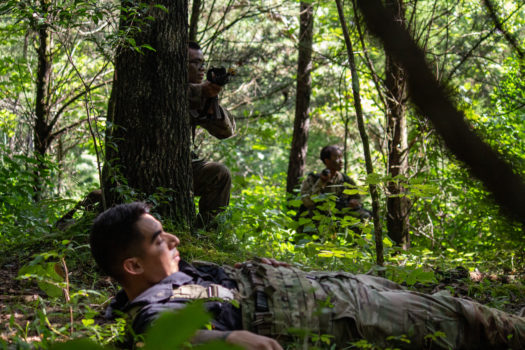One Cadet started the mission, another Cadet had to finish it.
10th Regiment, Advanced Camp Cadets began their movement to contact mission with the vision of 3-4 opposing forces near their objective. Minutes after contact with the opposing forces (OPFOR), the platoon scrambled – only to find themselves being surrounded from behind by more opfor.

Opfor were multiplying and appearing in all directions, but platoon leader Erika Zachary, St. Mary’s University – San Antonio, rallied everyone to gather in one area… but the forces were too strong as Zachary was taken down before it happened.
Michael Numa, Virginia Military Institute, realized his counterpart was down and immediately took on the respective role of platoon leader.
“During the mission, the PL (platoon leader) went down,” said Numa. “As PSG (platoon sergeant), second in command, I was looking for her and I saw she was on the ground. So I just stepped up and became the PL.”
Numa’s next step after the succession of command, otherwise known as the change in command after one person is taken from the fight, was to call on a black and gold plan. Black and gold plans are alternate escape routes that can help the platoon get to safety by shouting “black” or “gold” – the platoon would know what direction to travel.

After bounding from enemy fire, the platoon learned how to step up according to the succession of command, which left both Zachary and the platoon with enough confidence to see how the mission would wrap up.
“That means as the platoon leader, I briefed a solid plan,” said Zachary. “I entrusted them to make sure that if I go down and have a succession of command, everyone can pick up where I left off.”
Once Numa stepped into his new spot as the platoon leader, everyone followed his lead and stepped into their bigger leadership roles to carry out the rest of the mission.
“Succession of command is important,” said Numa. “You need to know who is going to be in charge when your leader goes down – and somebody needs to step up.”




